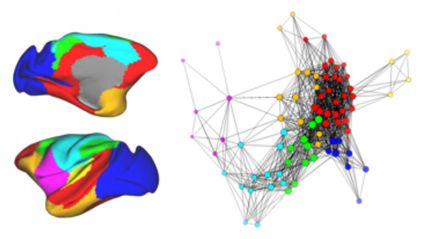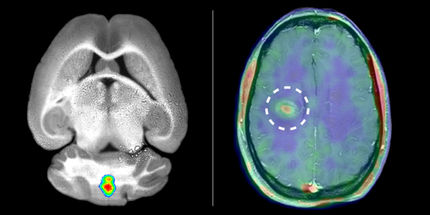Neuroimaging study may pave way for effective Alzheimer's treatments
Scientists have determined that a new instrument known as PIB-PET is effective in detecting deposits of amyloid-beta protein plaques in the brains of living people, and that these deposits are predictive of who will develop Alzheimer's disease. The finding, the result of a survey of more than 100 studies involving the instrument, including those by the scientists, confirms the sensitivity of the tool, not yet commercially available. In clinical practice, amyloid deposits are detected only on autopsy.
The study also provides strong evidence supporting the so-called "amyloid hypothesis" – the theory that accumulation of amyloid-beta protein plaques in the brain is central to the development of the disease. While significant evidence has supported this hypothesis, it has been questioned for two main reasons. First, amyloid deposits do not correlate with the severity of the disease, and are, in fact, found at autopsy in people who did not have clinical symptoms; and second, drugs targeting the plaques have shown disappointing results, even when the drugs were successful at substantially lowering plaque burden. Thus, the question of amyloid's role in the illness has remained.
"Our survey of PIB-PET studies, which looked cross-sectionally and longitudinally at people with normal cognitive performance, mild cognitive impairment and full-fledged Alzheimer's disease, showed that amyloid deposits can be detected in a significant proportion of cognitively normal older adults, and that their presence is associated with Alzheimer's-like brain atrophy and changes in brain activity," says co-author Gil Rabinovici, MD, assistant professor of neurology in the UCSF Memory and Aging Center.
The study also showed that older individuals with amyloid deposits were much more likely to show cognitive decline over time than their "amyloid-negative" counterparts, says Rabinovici, whose co-author was William Jagust, MD, of the Helen Wills Neuroscience Institute at the University of California, Berkeley, and Lawrence Berkeley National Laboratory.
The results of the survey, reported in Behavioral Neurology, may explain why patients with Alzheimer's disease have not responded to promising experimental drugs that target amyloid, and suggest that these drugs may be effective if administered earlier.
"Amyloid deposits appear to reach a plateau early in the disease course, when patients experience very mild symptoms or no symptoms at all," says Rabinovici, a recipient of new investigator awards from the Alzheimer's Association and the National Institute on Aging. "By the time patients have developed the symptoms of Alzheimer's disease, clinical decline and brain changes are occurring independently of further amyloid accumulation. This suggests that we have been starting treatment too late, and that amyloid-based therapies are most likely to work very early in the disease process."
Existing drugs, such as Aricept, Exelon and Razadyne, treat symptoms but do not modify the biological progression of the disease, he says. Many treatments under development, however, target amyloid deposits in an attempt to arrest further decline. Thus far, these treatments have failed to produce a benefit in two phase III clinical trials in mild-to-moderate Alzheimer's disease.
PIB-PET involves injecting a tracer material known as Pittsburgh compound B (PIB) into the brain via the bloodstream, and imaging the brain with positron emission tomography (PET). PIB binds to amyloid-beta protein plaques, a hallmark of Alzheimer's disease, and sends a signal that is then detected by the PET scanner and translated into an image reflecting the quantity and distribution of amyloid in the brain. In the studies surveyed, scientists complemented the PIB-PET investigations by using additional neuroimaging techniques such as magnetic resonance imaging or FDG-PET, which allowed them to measure the size of different brain structures, network connections or brain metabolism.
While PIB-PET is used for research purposes only, due to its limited "half life," or amount of time it takes for the radioactive signal of the compound to decay, other amyloid imaging agents are being developed for commercial use. However, Rabinovici "strongly discourages" uses of the technology in cognitively normal individuals until effective and safe anti-amyloid therapies are available and the benefit of preventive treatment is demonstrated in clinical trials.
Eventually, he predicts, the technology might be used for screening those genetically at risk for Alzheimer's, as well as those who are minimally symptomatic. Anti-amyloid treatments would then be prescribed to prevent the onset of the disease.
Most read news
Other news from the department science

Get the analytics and lab tech industry in your inbox
By submitting this form you agree that LUMITOS AG will send you the newsletter(s) selected above by email. Your data will not be passed on to third parties. Your data will be stored and processed in accordance with our data protection regulations. LUMITOS may contact you by email for the purpose of advertising or market and opinion surveys. You can revoke your consent at any time without giving reasons to LUMITOS AG, Ernst-Augustin-Str. 2, 12489 Berlin, Germany or by e-mail at revoke@lumitos.com with effect for the future. In addition, each email contains a link to unsubscribe from the corresponding newsletter.


























































